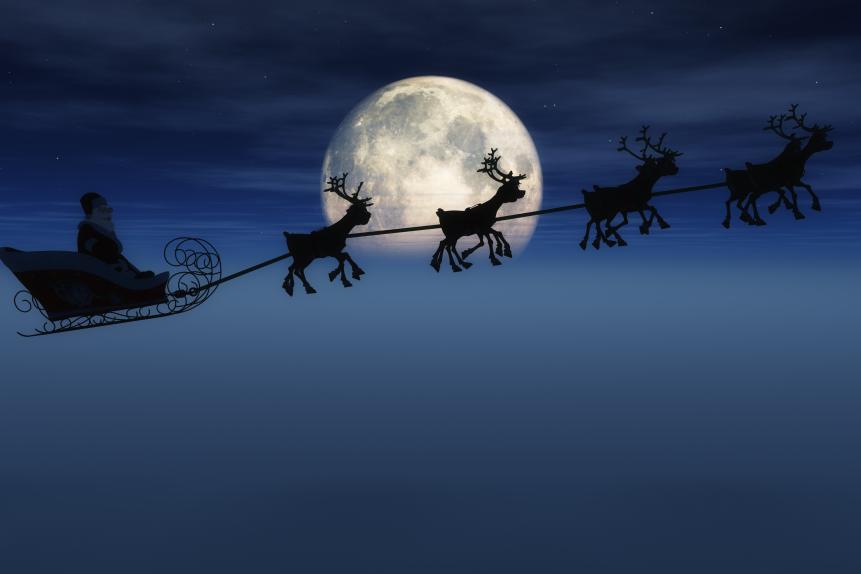
Per Breiehagen
Time Dilation, Special Relativity, and Santa’s Delivery Schedule

How does Santa make it to all the children in the world in one night? Can flying reindeer travel at the speed of light?
Dive into the physics behind this Christmas tale.
Tonight’s the night.
You’ve got a bag full of toys. You’ve made a list of all the good girls and boys. You’ve got your trusty reindeer, and a belly ready for some cookies.
You’ve got a plan. There are approximately two billion children in the world. Not all of them believe in you, so they’re off the list immediately. Some of them have been very naughty this year, unfortunately, so they’re off the list too. Let’s assume that leaves you with 1 billion children. If there is on average one child per household, that’s one billion individual stops.

Per Breiehagen
You’ve got 24 hours to get this right.
Let’s assume further that the average distance between households is 10 miles. (Yes, I’m making these numbers up on the spot so that I can talk about physics in a bit.) So you’ve got to cover ten billion miles in 24 hours. That means you have to travel at approximately 415 million miles per hour, which is about 62% the speed of light.
Traveling at that speed gives you an unexpected boost. Einstein’s special theory of relativity has taught us that moving clocks run slow. Literally. A clock in motion will tick at a slower rate than a stationary one. We’ve even tested this in the most literal way possible, by comparing super-precise atomic clocks sent jet-setting around the world to ones that stayed at home. At the end of the trip, the globe-hopping clock was running behind the stationary one.
But it’s not just clocks: it’s all of physics. All of chemistry. All of biology.
You, traveling at 62% the speed of light to hit your appointed rounds, won’t feel any different than normal. The watch on your wrist looks the same. You can check your pulse and it wouldn’t seem off at all.
But the world around you would appear to move in slow motion, operating about 27% slower than you.

JoeLena
These effects get worse the closer you get to the speed of light. At 86% of the speed of light, your rate of time is half that of the outside world. At 99% the speed light, one second for you takes over seven for the rest of the universe.
So while all the good girls and boys think you only have 24 hours to finish, you won’t feel that entire length of time – you’ll only experience the relative passage of about 19 hours.
There is a downside to that terrible velocity though. And that’s the atmosphere. Meteors travel at only a tiny fraction that you do, and when they encounter our atmosphere they generate so much heat that they tend to completely evaporate. The only things that make it through our atmosphere at relativistic speeds are tiny subatomic particles, and even they have a rough time of it.
Dive Deeper into our Galaxy
Journey Through the Cosmos in an All-New Season of How the Universe Works
The new season premieres on Science Channel and streams on discovery+.
Hope you packed your heat shielding.











